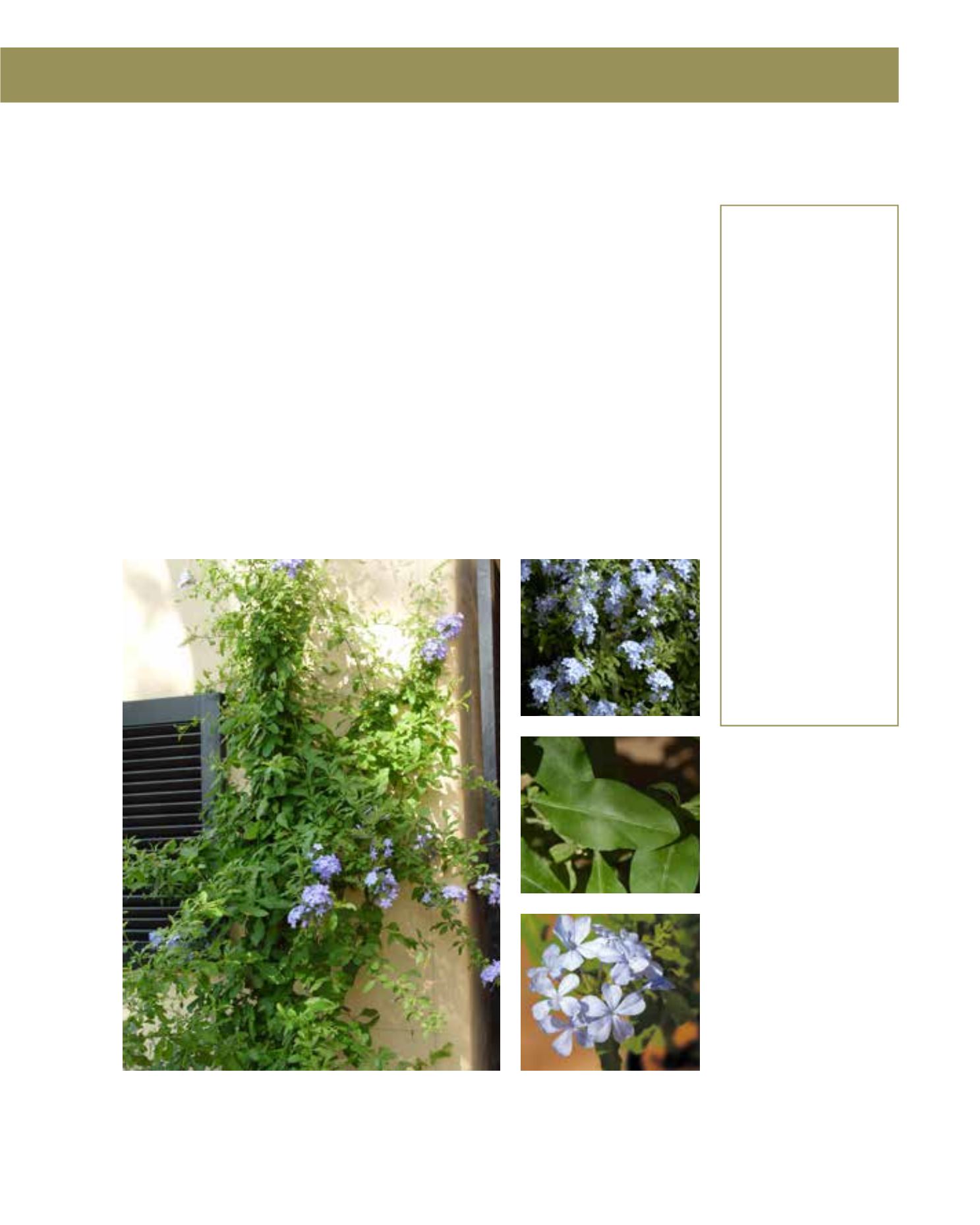

GENERAL
Origin
:
Mediterranean,
sub-tropical,
tropical
Humidity
:
semi-humid, very
humid
Propagation :
sowing and
pricking out,
layer, cuttings
Maintenance :
moderate
CONDITIONS
Urban climate :
resistant
Dessication :
vulnerable
Stagnant water :
vulnerable
Irrigation
:
medium
Salinity/ppm :
moderate (1500
ppm)
Hardiness
:
-9°C
SHAPE
Type
:
climbers
Height
:
4 m-6 m
Spread
:
3 m-6 m
Foliage
:
evergreen
FLOWER
Colour
:
light blue
Size
:
3 cm
Period
:
June - September
FRUIT
Type of fruit :
capsule
Fruit size
:
0.8 cm
In its native region from the Cape Province to Natal, the Leadwort grows up to 4 metres high and
6 metres wide under ideal conditions. An excellent shrub or climber in Arriyadh, it seems to have
adapted well to the growing conditions there. Owing to tiny glands, the foliage slightly adheres
to the skin or clothes. The Latin name auriculata refers to the ear-shaped leaf base, and Plumbago
includes the Latin word for lead because it allegedly healed lead poisoning. Flowers may appear
for a very long time, but between June and September the Cape Leadwort is coated in sky blue.
‘Alba’ is a white-flowering cultivar and ‘Royal Cape’ has intensely blue flowers. The campanulate
inflorescences attract butterflies. Following pollination, seed capsules, develop retaining their
adhesion to allow distribution by passing animals. In its natural habitat, this climber is associa-
ted with the Cape Honeysuckle (Tecomaria capensis). It may be trained to cover a fence, or grow
against a wall or along a trellis. It takes hard pruning and will even flower within the same year.
Its limited size means that it can climb into trees without suffocating them. An interesting feature
is the suckers that may allow the Cape Leadwort to grow as a large-scale areal cover. It resists
drought, and thrives in any type of soil. However, additional watering and high levels of humus
and nutrients are welcome. Frost may cause foliage and slender twigs to die back, but plants quic-
kly recover. Propagation may be carried out by cuttings, suckers and seeds.
238
Plumbago auriculata,
Plumbaginaceae
Cape Leadwort
















